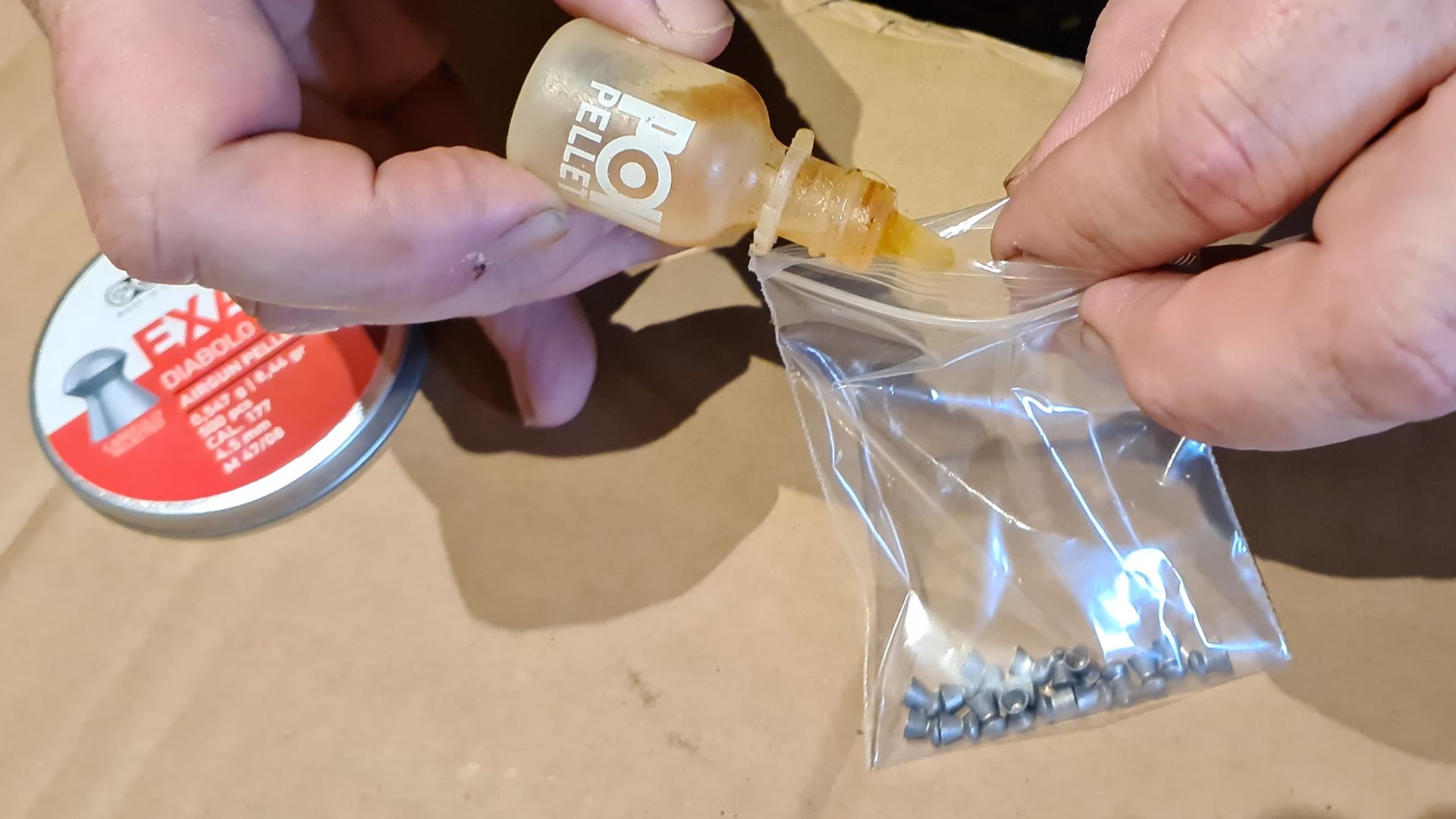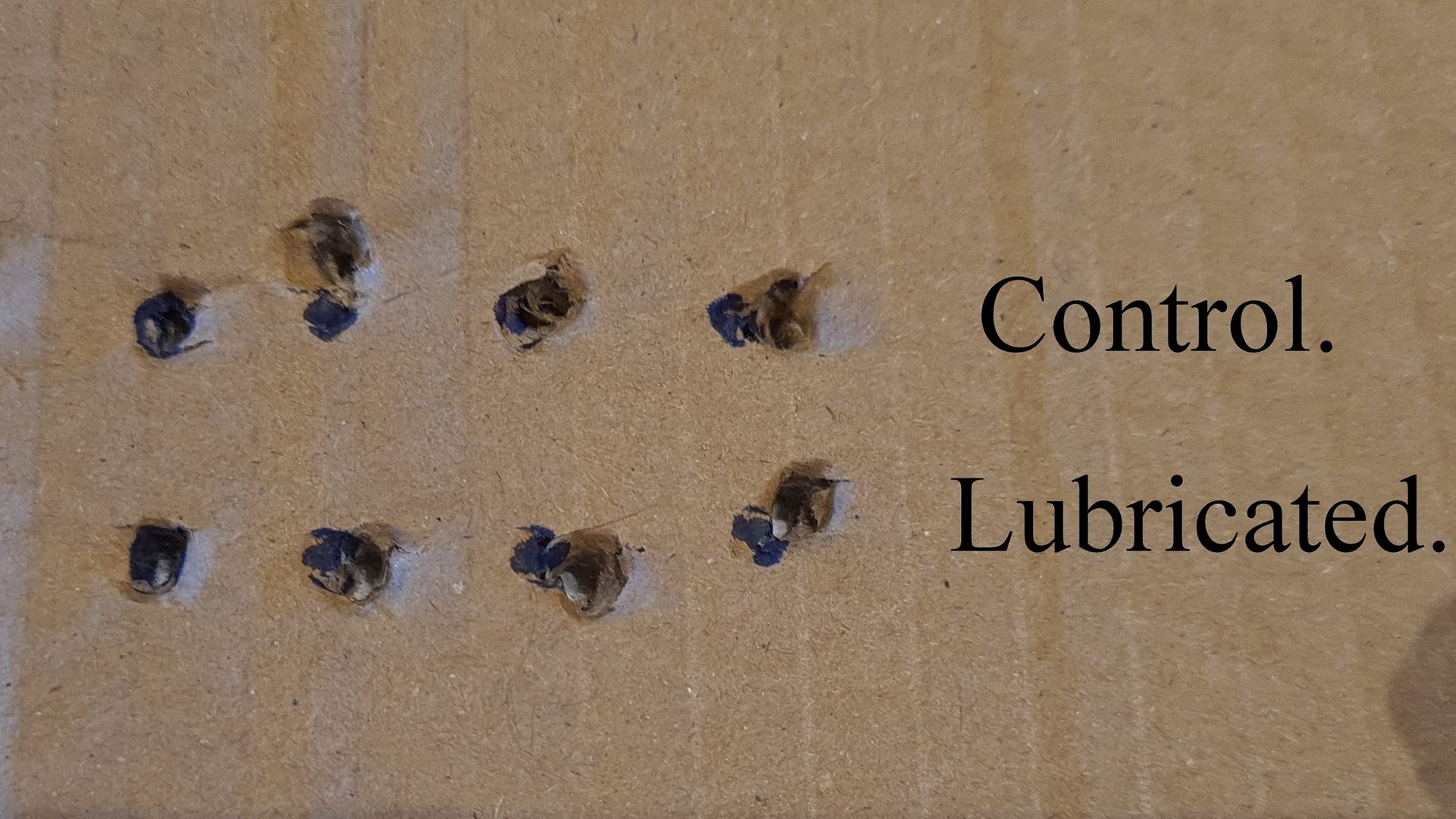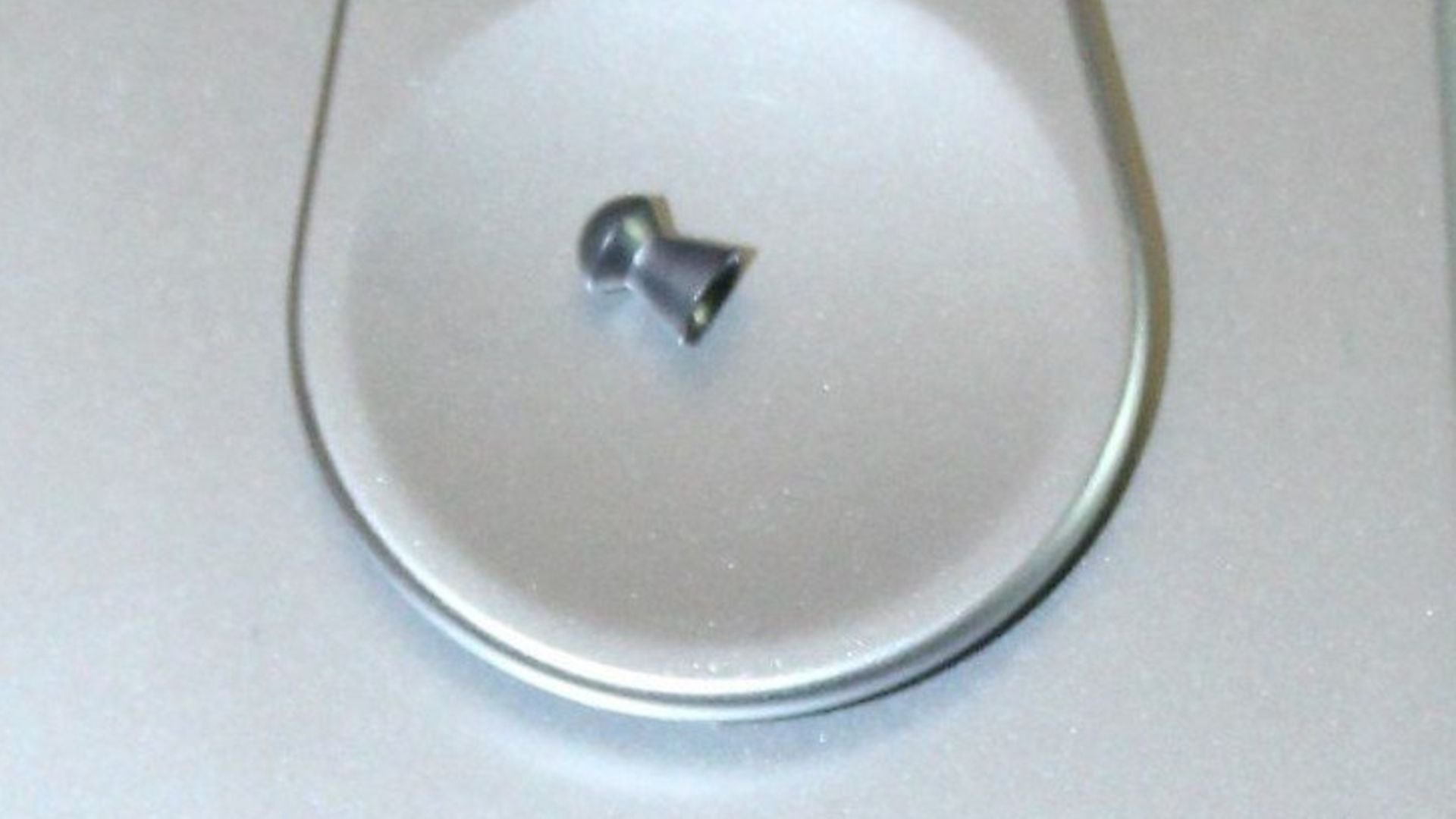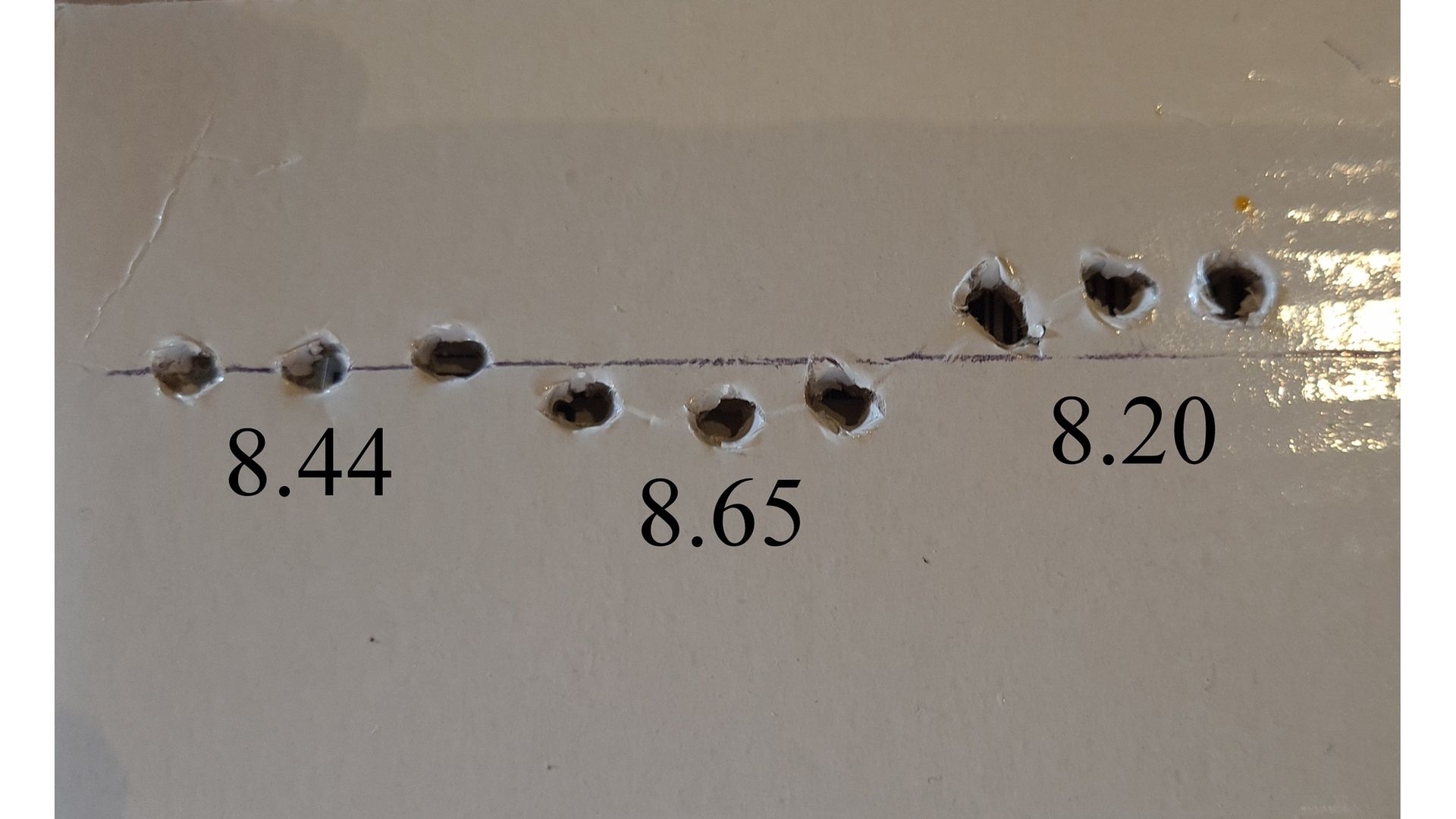Gary Chillingworth reveals the virtues of preparing your air rifle pellets, and explains the benefits it can bring to your shooting, and your rifle!
Recently, I made a video for Shooting and Country TV (watch it above!), all about pellet perfection; what can cause a pellet to go off line, and the virtues of washing, weighing and lubrication. We then looked at how damage to the head or the skirt could affect the flight of the pellet, and if a pellet from the tin being heavy or light, can cause you to miss a target. Over the next few months, we are going to look at each of these areas in depth – this time it’s lubrication and weight – and to test all these subjects we need an accurate rifle and a high-end scope. Luckily, I have my competition HFT500 and the Zeiss Conquest 4.
So, let’s start by getting a baseline of accuracy. The rifle is filled to 180 bar and its running at 775fps, and at the start of each test, we will refill the rifle to 180 bar and fire off five shots to make sure that the rifle is within its sweet spot. I have placed a target out at 40 yards, and by using my anemometer I can see that we only have a 4mph wind. The target is five dots and as you can see, we have clipped each dot with our test ammo. This test ammo has been weighed at 8.44grns, but not washed or lubricated.
 credit: Archant
credit: Archant
Washing and lubing the pellets
Many years ago, I was told by Pete Sparkes that the best way to wash pellets is to place them in a jam jar with some warm water and a bit of car shampoo. Don’t use Fairy Liquid because it contains salt and this can lead to corrosion of the barrel. Place 50 or so pellets in the solution, gently swirl the water around in the jar and before long, you will see the colour change slightly. Drain the solution, place the pellets on some kitchen towel and then dry with a heat gun or hairdryer. You can place them in an oven on a low heat, but don’t put them on a baking tray because they might soak up grease, or leave residue that could get into food.
When they are dry, put them in a small bag, put a few drops of Napier pellet lube into the bag and rub it round the pellets. You are now lubed up, so let’s give it a test.
 credit: Archant
credit: Archant
As you can see from the pics, it’s made no difference to the accuracy of the rifle, lubing pellets does not affect the amount of wind taken and does not makes them fly faster through the air, so why do we do it? Well, if you have a rifle that likes a clean barrel, using lubed pellets will mean that you will not have to clean the barrel as often and this can be a real boon. Also, some pellets are filthy; the pellets I have used today are JSBs and they are a very clean pellet, as are AA Fields, but have a look in your tin. If there is lots of swarf or release agent, then giving them a clean could be a good idea.
 credit: Archant
credit: Archant
Weighing the pellets
The next area is weight and for this we need a set of jewellers scales – around £10 from eBay. The night before a big comp, I weigh out 50 pellets and place them in a secure tin. I use my pellet tin from Custom Targets. This little tin keeps pellets safe and is perfect for keeping in your pocket when you are out on the course – and as it has two layers, there’s plenty there for plinking and shooting.
In a tin of 500 pellets you will get everything from a light 8.30grns, all the way up to 8.60grns. This is because of inconsistencies in the wire at manufacture, and there is nothing that can be done about it. So, I weigh 50 and use everything from 8.40 to 8.49 – anything outside this goes into a separate tin, and this is used for standing and kneeling practice.
For this test, I shot a line at 40 yards, and as you can see in the pic at the bottom of the page, the first three shots were the control and they split the line. I then shot three pellets that weighed 8.60, and they all hit low, and then the 8.20s – and they all hit high.
Also, with the 8.20grn pellets, it put me very close to the 800fps limit on the chronograph. So, if I declared an 8.44 grn pellet at the chrono’ and then shot one that was 8.20grn, I could get thrown off the course if it went over. The pellet flight is affected by weight, so weighting is certainly worth it because it could be the difference between a clean kill of a target, or a split, or miss.
 credit: Archant
credit: Archant